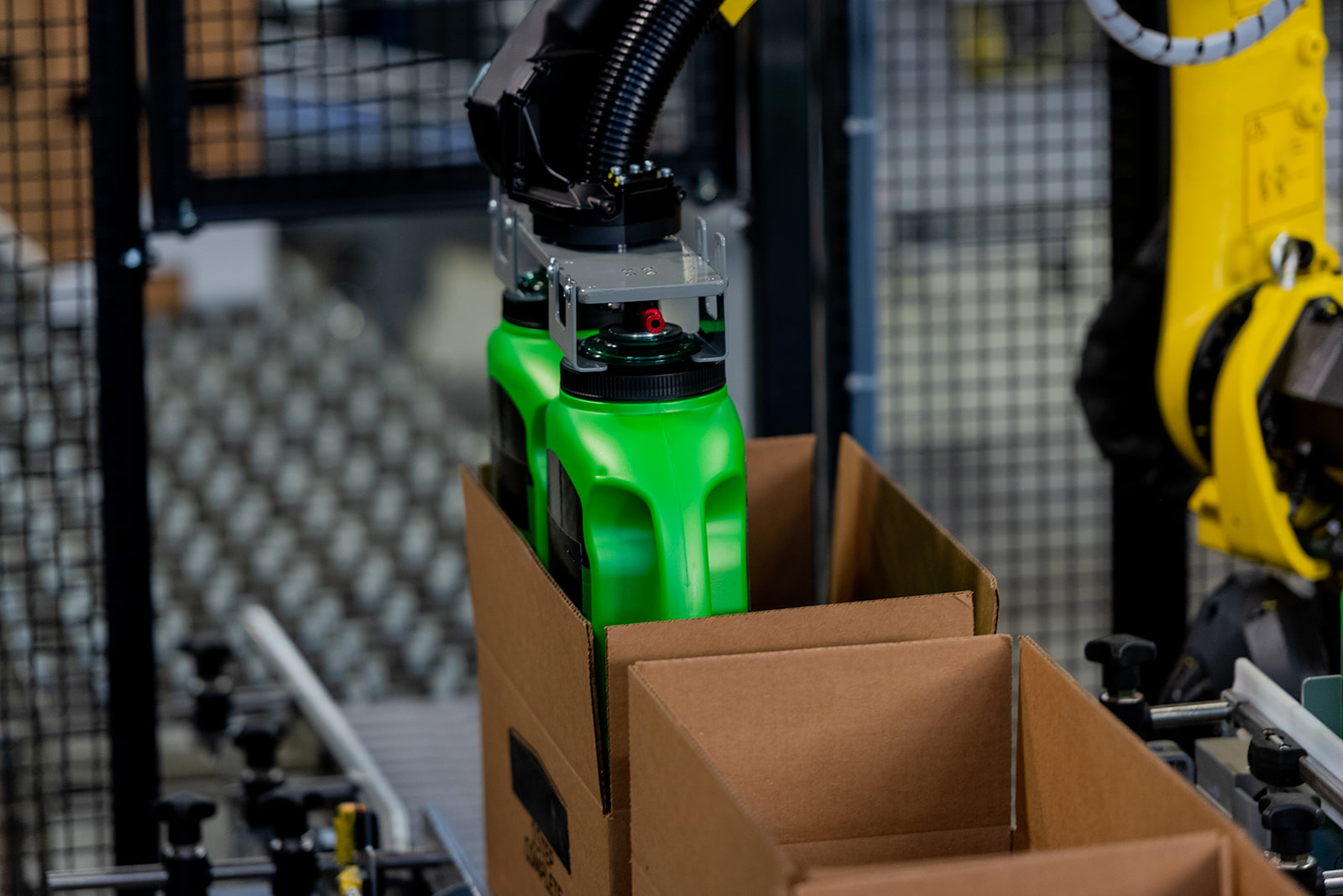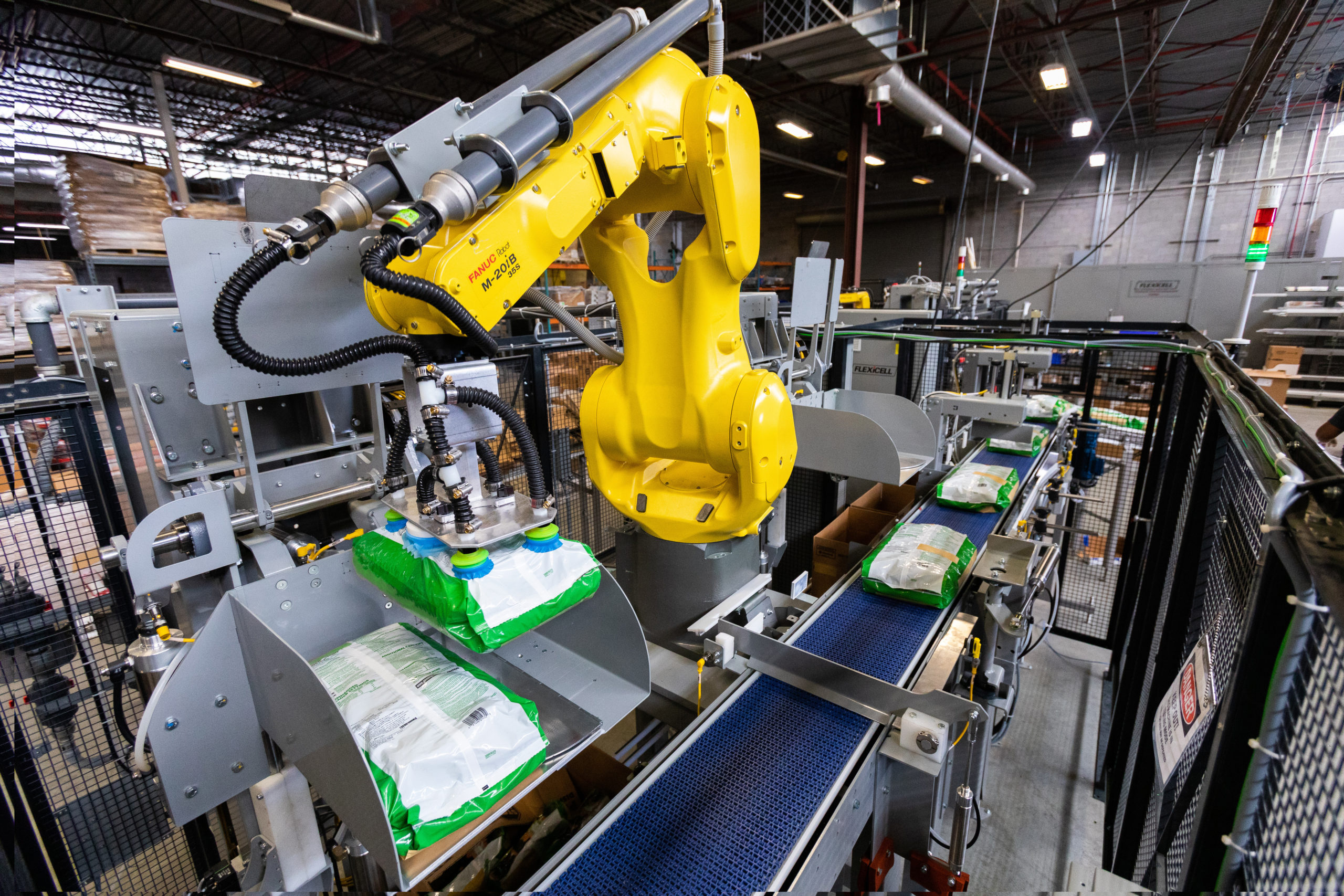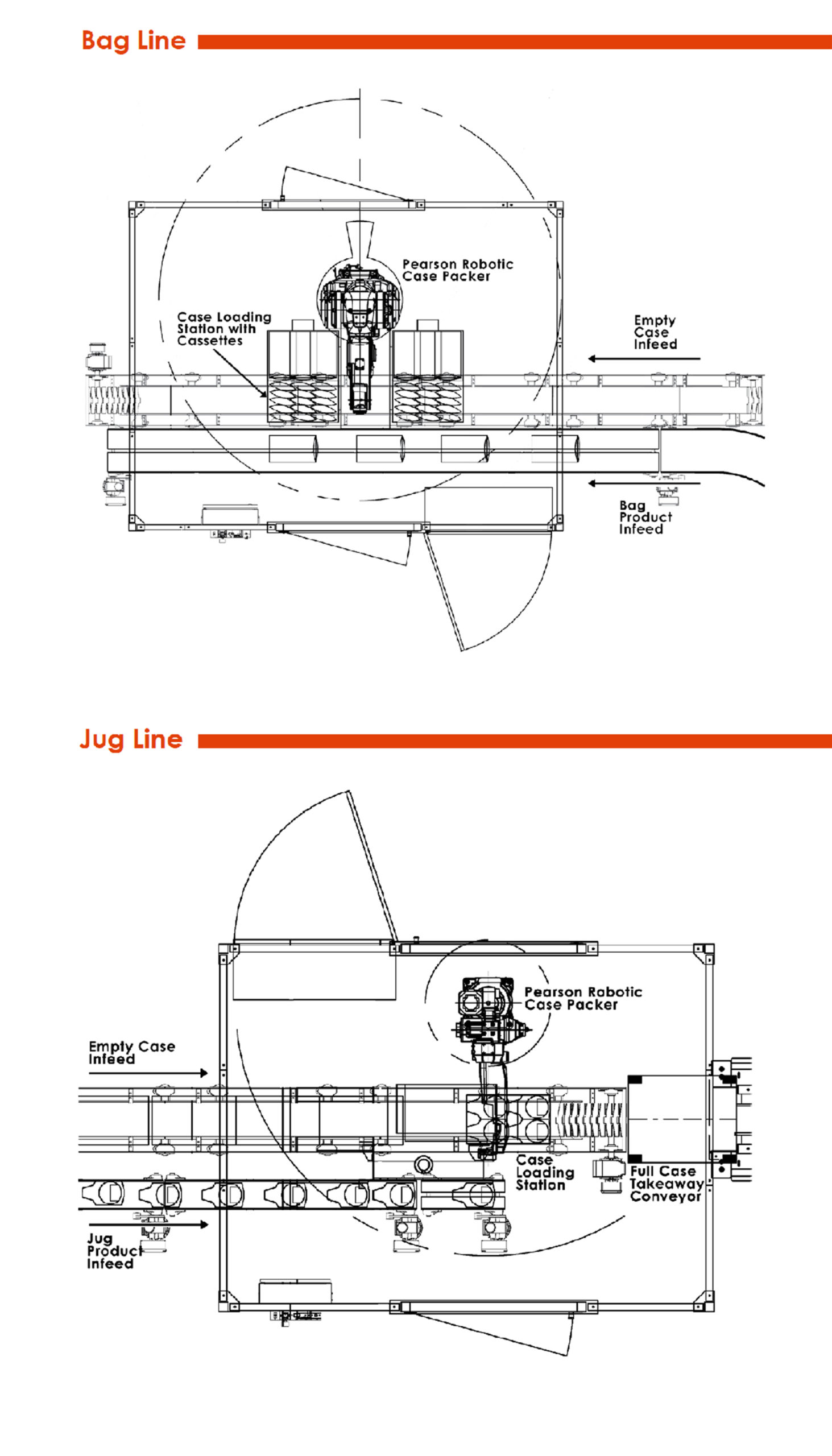This grass and mulch seed manufacturer wanted to replace four case packing lines in two separate facilities. The grass seed facility used 15-year-old equipment that required frequent and time-consuming changeovers. The mulch seed facility, on the other hand, could not keep up with staffing needs for their manual pack operation. Both facilities desperately needed an upgrade to ensure efficiency and reliability of their operations.
Menu
- Equipment
- Case Erecting
- Bag & Partition Insertion
- Case Packing
- Case Sealing
- Robotic Palletizing
- Integrated Systems
- Erect, Pack & Seal for Heavy Jugs
- Robotic Palletizer for Heavy Syrup Bag-in-Box Cases
- Complete Line for Trays and Bags of Bacon
- Erect, Insert, Pack, Seal & Palletize for Jugs of Laundry Detergent
- Case Packing Bagged Tortillas
- Complete Line for Packing Glass Jars
- Case Packing / Palletizing of Cartons
- Case Packing / Palletizing of Bottles of Soap
- Case Packing & Palletizing of Olives Tubs
- Close
- Close
- Modifications and Upgrades
- Technical Service
- Parts
- Close





